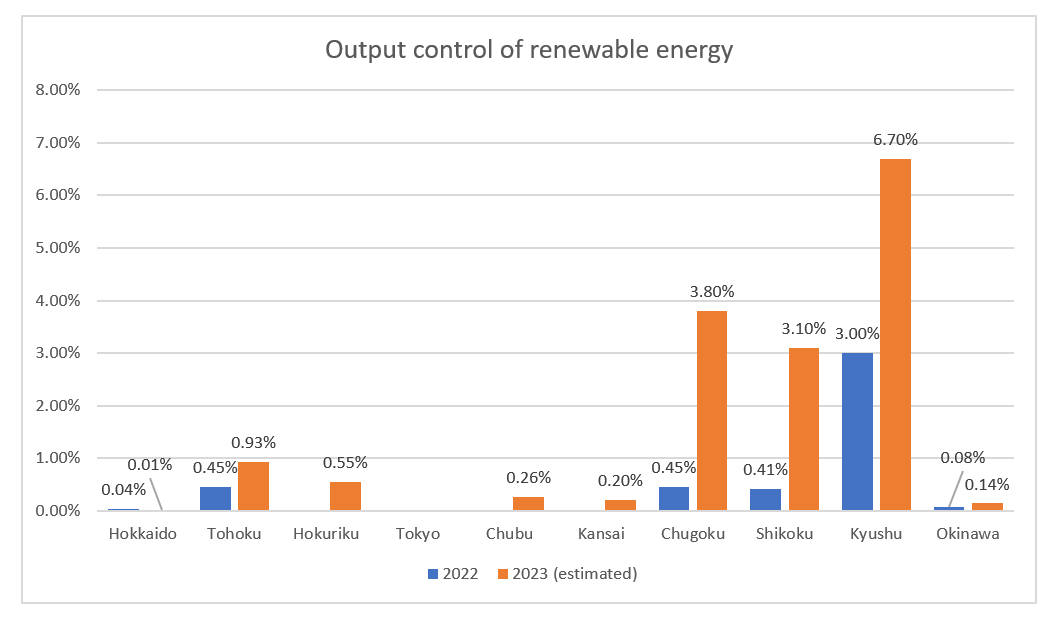On March 14, J-POWER announced that its Tachibanawan Thermal Power Plant Unit 1 (Anan-city, Tokushima) has been out of operation since February 15, due to a steam leak from its high temperature reheat steam pipe. During inspections, J-POWER discovered a crack in one part of the high temperature reheat system pipe, and its cause is currently under investigation. J-POWER is planning to replace the cracked pipe and expecting to resume operation at the end of February 2025.
There are 2 units at the Tachibanawan Thermal Power Plant: Unit 1 with 1,050MW capacity, which started operation in July 2000, and Unit 2 with the same 1,050MW capacity, which started operation in December 2000. Combined, these 2 units emit a total of 9.05 million tons of CO2 annually (FY2021 results). Electricity generated at this power plant is used not only in the Shikoku area, but also distributed to the neighboring Kansai, Chugoku, and Kyushu areas. In recent years, the Kyushu, Chugoku, and Shikoku areas have increasingly implemented output control of renewable energy due to the increased connection volume of renewables.

Recently, the Shikoku Electric Power Transmission and Distribution Company has disclosed the electricity supply and demand figures for the Shikoku area, which show that there were times during the daytime when almost 100% of electricity demand was met by solar and wind power generation alone.

Output control of renewable energy is to be carried out in accordance with the, “Electricity Supply Priority Rule” set by the government, which stipulates that the output control of existing coal-fired thermal power plants is 50% when the output control of renewable energy is carried out. If the Shikoku area’s electricity demand is covered by renewable energy alone for a longer period of time in the future, the need to distribute electricity produced by Tachibanawan Thermal Power Plant to other neighboring areas will increase. This means that the operation of coal-fired power plants (in the Shikoku area) could lead to increased output control rates for renewable energy not only in the Shikoku area, but also in neighboring areas receiving electricity.
In order to achieve the 1.5°C goal to prevent global warming, greenhouse gas (GHG) emissions must be reduced to zero by 2050. To do so, we need to increase renewable energy and phase out large-scale CO2 emission sources such as coal-fired power plants at an accelerated pace. J-POWER should take this occasion to consider shutting down this unit. Furthermore, it should formulate a phaseout plan for all of its coal-fired power plants, including Unit 2, as soon as possible.
In order to promote the phase-out of coal-fired power plants, it is also necessary to support the local governments/municipalities where power plants are located so that they can promote regional transitions to a decarbonized society after the plants are closed. The government must set a target year for phasing out all existing coal-fired power plants, develop a concrete pathway to achieve this goal, steadily phase out coal-fired power plants, and begin to provide regional support for just transition.
Related Links
J-POWER’s News Release: Suspension of Operation of No. 1 Unit at Tachibanawan Thermal Power Plant (March 14, 2024)

